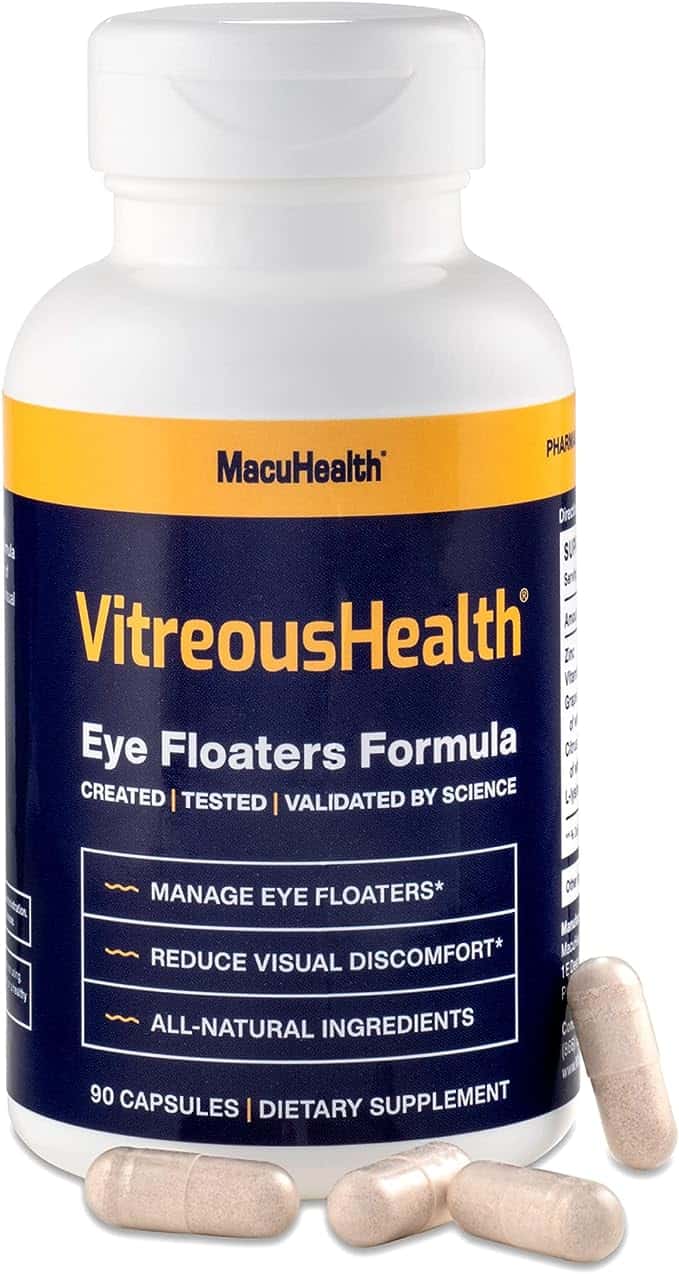Understanding Vitreous Floaters

Vitreous floaters are a common eye condition that many people experience at some point in their lives. These floaters appear as small, dark specks or cobweb-like shapes that drift across your field of vision. While generally harmless, they can be annoying and may even affect your quality of life. This article aims to shed light on vitreous floaters and how you can promote vitreous health using a supplement like Vitreous Health by MacuHealth, available at Compton Eye Associates.
What Are Vitreous Floaters?
The vitreous humor is a clear, gel-like substance that fills the space between the lens and the retina in the human eye. It accounts for about 80% of the eye’s volume and plays a crucial role in maintaining the eye’s shape1. As we age, the vitreous starts to undergo changes; it begins to liquefy and may shrink slightly, pulling away from the retina. This process is known as vitreous syneresis. During this phase, the collagen fibers within the vitreous can begin to clump together. These clumps or strands can cast tiny shadows on the retina—the light-sensitive inner lining of the back of the eye. These shadows are what we perceive as floaters.
Types of Floaters
- Specks: These look like small dark dots and are the most common type of floaters.
- Cobwebs: These have a slightly more complex structure and look like spider webs floating in your vision.
- Ring-shaped: These are less common and appear as large circles, often noticed when looking at a plain background.
When Do They Occur?
Floaters are most commonly observed when looking at a bright, plain surface, such as a blank wall or a clear sky. They move as your eyes move and seem to dart away when you try to look at them directly.
Are They Always Harmless?
While most floaters are benign and are more of an annoyance than a medical concern, a sudden increase in the number of floaters, especially if accompanied by flashes of light or loss of peripheral vision, could indicate a more serious issue like a retinal tear or detachment2. In such cases, immediate medical attention is required.
As indicated by the American Optometric Association, understanding the nature and types of vitreous floaters can help determine whether they are a harmless occurrence or a sign of something more serious3.
Causes and Risk Factors
- Aging: The most common cause of floaters is the natural aging process.
- Eye Injuries: Trauma to the eye can also cause floaters.
- Medical Conditions: Conditions like diabetes can increase the risk of developing floaters.
Treatment Options
In most cases, floaters are harmless and do not require treatment. However, if the floaters are affecting your vision or are accompanied by flashes of light, it’s crucial to consult an eye specialist immediately4.
Promoting Vitreous Health with MacuHealth
Vitreous Health by MacuHealth is a supplement designed to promote overall eye health, including the health of the vitreous. It contains essential nutrients and antioxidants that can help maintain the integrity of the vitreous gel, thereby reducing the risk of developing floaters5. At Compton Eye Associates, we offer Vitreous Health by MacuHealth as part of our comprehensive eye care services. Our team of experts can guide you through the best practices for maintaining vitreous and overall eye health.
Don’t let vitreous floaters affect your vision and quality of life. Schedule an appointment with Compton Eye Associates today to discuss your options and find out if Vitreous Health by MacuHealth is right for you. Call us at 800-936-0036 to book your appointment.